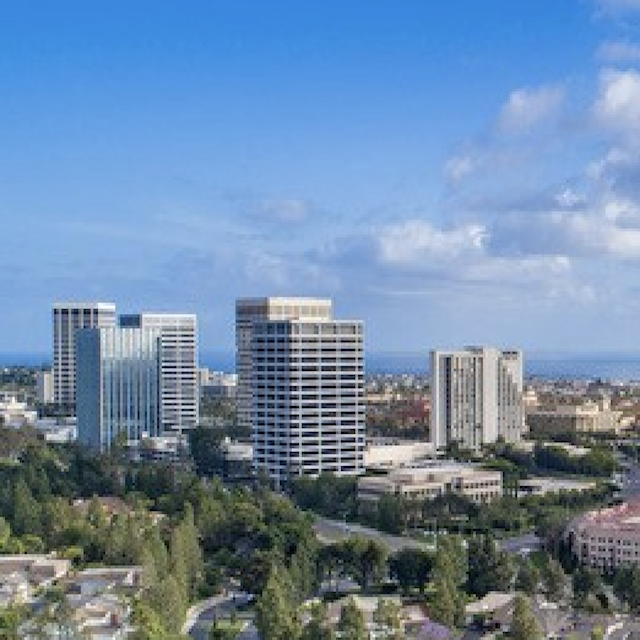Orange County Office Space Undergoing ‘Staggering’ Amount of Repurposing

Orange County’s office vacancy is on the rise — but properties are moving to conversion at a rapid pace, according to JLL’s Q3 Office Report.
Sublease availability rose from 2.47 million square feet to 2.58 million square feet in the three months through September. However, it remained low at 2.6% of inventory, below the 3.4% average in Southern California, as the space in the market gets repurposed to other uses.
“That 8.9 million square feet actively being repurposed is staggering,” Mitch Lundquist, JLL's senior managing director, told GlobeSt.com.
“What’s particularly striking is the strategic distribution – 4.77M square feet to industrial and 2.78M square feet to residential. This isn't panic selling – it’s a calculated repositioning by sophisticated owners who recognize permanent shifts in demand.”
Lundquist said that the surprise isn't that conversions are happening, but the scale and speed at which landlords are pivoting entire asset classes.
Average rents are stable at $2.99/square foot, with premium areas like Newport Center commanding $4.54/square foot. This suggests a bifurcated market where quality assets maintain pricing power while weaker inventory gets converted, he said.
“Emerging dynamics indicate strengthening tenant demand from larger, credit-worthy occupiers alongside decisive return-to-office mandates creating genuine space requirements,” according to Lundquist.
“Combined with 8.9 million square feet of active conversions, this is generating a supply funnel effect - quality inventory shrinking while tenant requirements solidify, signaling an early landlord-favorable market transition.”
Companies mandating office returns are discovering that quality space is increasingly constrained by conversion activity, according to JLL.
“We’re observing longer tenant decision timelines and increased competition for premium assets in our deal flow, though metrics haven't captured this inflection point yet.
Airport Area a ‘Corporate Magnet’
The Airport Area stands out in Orange County as the largest and most diverse office market, positioning it to capture the majority of tenant activity.
The Airport Area submarket comprises 45.6% of the total county inventory (45.67M square feet) – nearly half the market. Its premium rent commands $3.16/square foot, compared to the county average of $2.99/square foot – not as high as Fashion Island and Irvine Spectrum, however.
“This corporate magnet consistently captures the largest lease transactions due to consistent availability and size of submarket, such as Hyundai's 133,750 square foot lease [at 2300 Main Street in Irvine],” Lundquist said.
“However, tenant preferences are nuanced. While the Airport Area's scale and infrastructure attract corporate expansion capital, many office tenants seeking premier amenities and access to the south county workforce gravitate toward Irvine Spectrum.”
Irvine Spectrum has a competitive edge. Its Class A vacancy mirrors that of Newport Center, indicating institutional-quality tenant demand. It boasts a superior amenity base with retail/dining integration, and its central Orange County location helps optimize employee commutes. This premium workspace environment is attracting high-caliber tenants.
“The Airport Area's diversity ensures broad market leadership, but Irvine Spectrum commands tenant attention when quality, amenities, and accessibility are priorities,” Lundquist said.
“Both submarkets benefit from the flight to quality trend, with Irvine Spectrum particularly well-positioned for tenants prioritizing employee experience and central accessibility.”
Low Level of New Construction
The construction pipeline has reached its lowest level since 2011, with only The Weave at OCVIBE currently under development, as builders continue to repurpose office properties for industrial and residential uses.
“The Weave at OCVIBE is a unique development because immediate capital returns are not the primary driving factor for this developer,” Lundquist said.
“Typical office developers are waiting for sub-15% vacancy and pre-leasing velocity above 10 million square feet before breaking ground.”
This construction “low” is both expected and necessary for market rebalancing, Lundquist said.
“Post-COVID office workspace trends drove vacancy rates up,” he explained.
“Even though vacancy rates weren’t as high as they might have been without stimulus, the space tenants were actually utilizing was much less than the space they had under long-term leases. This ‘shadow vacancy’ drove the rebalancing trends in the office market.”
Lundquist added that the high construction costs, coupled with the 17.1 percent vacancy rate in Orange County, makes the justification to build "irrational." Leasing has suffered too in the post-pandemic world.
"Investors are redirecting to industrial/multifamily with better fundamentals.”
Lundquist stated that new construction will not resume meaningfully until 2027-2028, creating a supply shortage that will benefit existing quality assets and drive rent growth in the overall market.
Source: GlobeSt/ALM